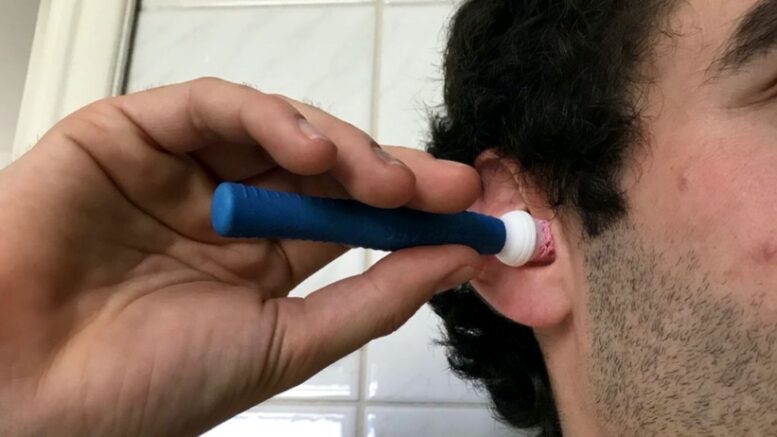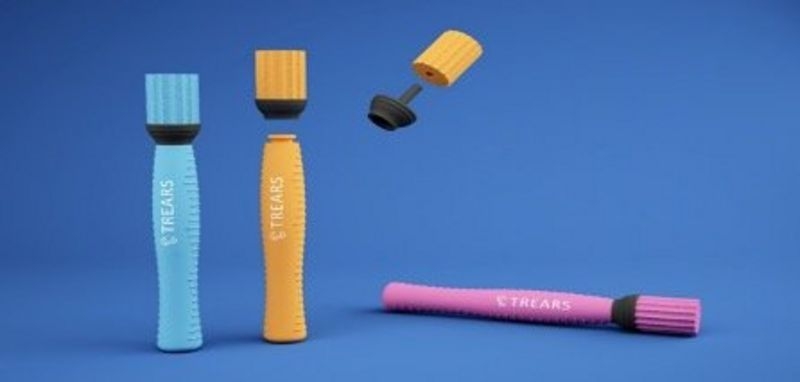BENJAMIN ANSON/THE SANTIAGO TIMES STAFF
As heavy, incessant rains splattered upon the flimsy roof up above me in a rustic classroom from which I teach English to 6th grade in a bilingual school in western Honduras, I held my phone close to the right ear – in an attempt to hear the speaker on the other end – who called me all the way from London, England via Whatsapp.
The speaker in question being a one Dr. Andres Herane-Vives: a highly respected Chilean psychiatrist employed by such renowned institutions as both the UCL Institute of Cognitive Neuroscience and the Institute of Psychiatry, Psychology & Neuroscience – at King’s College London.
The prolific Dr. Herane-Vives, a Santiago native, who stated (quote🙂 “I always knew that I wanted to be a psychiatrist”, has engaged himself with studies centred on depression.
As mentioned, having grown up in Santiago, he attended La Pontificia Universidad Catolica de Chile, where he studied medicine before progressing on to his specialization in psychiatry at the Universidad de Chile. Having shown remarkable talent and potential, the bold Dr. Andres Herane-Vives achieved a scholarship no less – backed by the Chilean government – to study in London. Hence his positions at both the UCL and KCL.
On asking him what instilled a passion for this field, he recounted how before graduating from High School, where he had demonstrated himself as a fine student, he and his fellow classmates attended a small course in psychology conducted by a female teacher. Left utterly intrigued by the subject, he took it upon himself to inquire further about the said career and was thus advised by this teacher that if he were to go forth with the venture then he would have to become a doctor first. This induced his studying medicine at La Universidad Catolica before eventually progressing on to psychiatry at La Universidad de Chile.
Then came the splendid opportunity with his well-deserved scholarship.
As time passed and as Dr. Herane-Vives settled into his new home in London – where he says “I still feel like a foreigner here after ten years”, he began to take interest in how such a vast number of patients were being subscribed anti-depression pills yet with no clear reasoning; he quickly noticed how such treatments were being handed out like candies. People were being diagnosed with depression and handed anti-depression pills left, right and centre.”
He wanted to know precisely what it was to be ‘depressed’ for over 70 years psychiatrists have worked on this issue and have been unable to produce a lab test for depression. It has therefore been arguably a matter of personal opinion on a professional’s part as to whether or not a patient has been ‘depressed’ or not.
Dr. Herane-Vives explained to me in what must have been (frustratingly for him I dare say) the simplest of terms what experiments had been conducted and which methods had been deployed in the past. I confess that one’s capacity for understanding anything medical is decidedly poor. He mentioned how blood, urine and saliva had been used beforehand as professionals like him sought to measure the levels of the cortisol hormone as a biomarker for depression. Some people have either increased or decreased levels of cortisol. However, even if increased or decreased this does not necessarily mean that one is depressed – Dr. Herane-Vives pointed out.
He then explained how hair was a better fit. Nevertheless, a good deal of hair was needed to conduct the studies and (quote): “It is hard to find the sufficient amount of hair in a lot of men and many women do not want to have their hair cut.”
Finding volunteers for these tests was no walk in the park. The issue was that they needed something which could be monitored over a long-term period. Fatty tissue was pondered over before the Doctor came up with an ingenious idea – his thoughts took him to honeycombs – amusingly. He realised how bees store this (honey) at room temperature and it is not consumed by micro-organisms. People could provide this from their own houses – not using bee’s honey of course – yet ear wax…
Earwax sampling could measure stress hormone
A novel method to sample earwax could be a cheap and effective way to measure the hormone cortisol, according to a study led by researchers at UCL and King’s College London.
The findings, published in the academic journal Heliyon, could point to new ways of monitoring depression and stress-linked conditions.
The new device can be used at home without clinical supervision, facilitating medical check-ups while maintaining social distancing due to COVID-19, and may also have the potential to measure glucose or COVID antibodies that accumulate in earwax.
Lead researcher Dr Andres Herane-Vives said: “Cortisol sampling is notoriously difficult, as levels of the hormone can fluctuate, so a sample might not be an accurate reflection of a person’s chronic cortisol levels. Moreover, sampling methods themselves can induce stress and influence the results.
“But cortisol levels in earwax appear to be more stable, and with our new device, it’s easy to take a sample and get it tested quickly, cheaply and effectively.”
Cortisol has been considered as a possible biomarker, or objective biological measure, for depression, but researchers have been stymied by challenges in accurately measuring cortisol levels. The most common technique is with hair samples, but they are more subject to short-term fluctuations in cortisol, and not everyone has enough hair for a reliable sample.
It is also more time-consuming and expensive to analyse hair samples, compared to earwax, but until now there has not been a reliable and non-stressful method to sample earwax.
To develop the new device, Dr Herane-Vives was inspired by another natural wax, honeycomb from bees, as it is known to be well-preserved and resistant to bacterial contamination. Earwax has similar properties, making it well suited for home sampling, as samples can be sent to a lab by post without much risk of contamination.
The novel earwax self-sampling device is similar to a cotton swab, but with a brake that stops the swab from going too far into the ear and causing damage. The tip is covered with a sponge of organic material, with a solution that has been tested to be the most effective and reliable at taking samples.
In their pilot study, Dr Herane-Vives and a team of researchers from the UK, Chile and Germany brought in 37 study participants to test different cortisol sampling techniques. The research team sampled participants’ earwax using a standard procedure with a syringe known to be somewhat painful, and then followed up a month later by using the same sampling in one ear, and the novel sampling technique in the other ear, which the participants could administer themselves. The researchers also analysed hair and blood samples from the same participants.
The researchers found that earwax samples yielded more cortisol than hair samples, and the new technique was the fastest and potentially cheapest method. The novel technique was the least influenced by confounding factors contributing to cortisol fluctuations over the previous month. In another recent study, participants rated the new self-sampling device as more comfortable than traditional methods.
Dr Herane-Vives is now building a company, Trears, to bring his earwax sampling device to market, with support from the UCL Hatchery startup incubator.
He and his team are also investigating whether the device could be useful to measure glucose levels from earwax samples, for monitoring of diabetes, and potentially even COVID-19 antibodies.
Dr Herane-Vives said: “After this successful pilot study, if our device holds up to further scrutiny in larger trials, we hope to transform diagnostics and care for millions of people with depression or cortisol-related conditions such as Addison’s disease and Cushing syndrome, and potentially numerous other conditions.”
In conclusion…
In what appears as a fascinating and indeed ingenious study by Dr. Andres Hervane-Vives, we wish him the very best of luck in his exciting new endeavour. May his pursuit provide pioneering new evidence and hopefully, his hard work and tremendous dedication shall bring both him and the psychiatry community an abundance of new results as they attempt to comprehend the terrible illness of depression in human beings.




